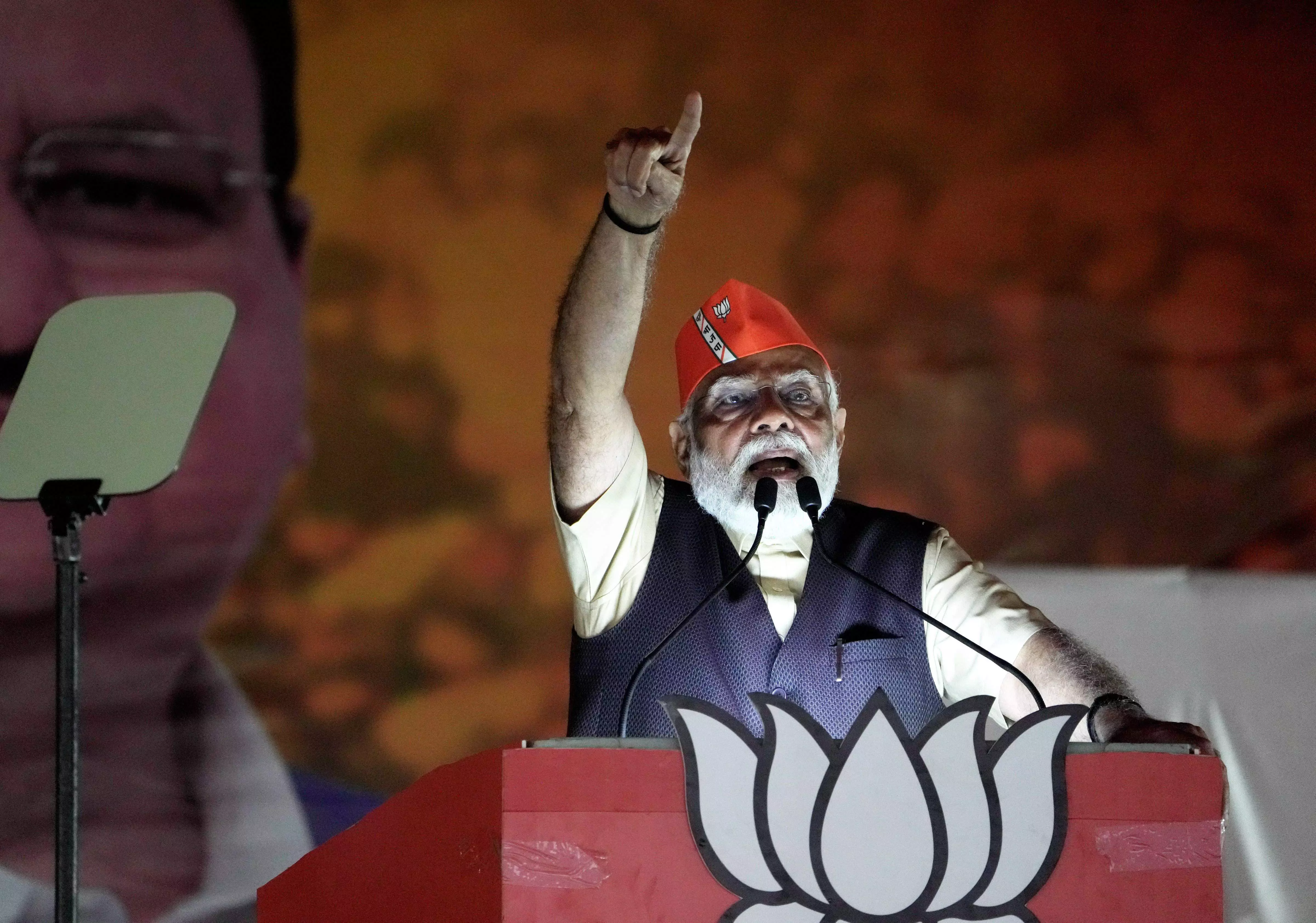
Millions of Indians — the aspiring and the perspiring — will soon be voting in what could turn out to be one of India’s most consequential general elections. For many, the return of the BJP and Prime Minister Narendra Modi is a foregone conclusion, as inevitable as the dramatic rise of India on the world stage.
But “India” simply cannot be reduced to just one story. And it does not coalesce into one story even on the eve of elections.
In a polarised country of over 1.4 billion, with deepening fault lines, the glaring issue in the poll discourse is not what we are discussing but what we are not discussing loudly enough. These gaps matter hugely because they affect the quality of life of ordinary citizens, including minorities, those who have been pushed to the margins of the economy and society. Being a citizen is not about casting a vote during elections and remaining a spectator in between. It means being a participant in one’s destiny, asking relevant questions all the time.
As part of spectatorial engagement with India’s political economy, we may marvel at the razzle dazzle of pre-weddings or weddings of India’s super-rich or at luxury car makers who have set their sights on the world’s most populous nation. Bentley is introducing its “Opulence Edition Collection”, an exclusive series of five models just for India. “Each model is imbued with the Indian spirit, inspired in particular by the colours of the national flag,” says its publicist.
But as a citizen, one must contextualise and heed the other India stories which lie buried in the meta narrative of India’s fast-growing economy, new airports, highways, railway stations and its rising geopolitical stature. Despite its GDP growth which makes it a very attractive market globally, 800 million Indians are still surviving on a government-supported scheme that offers free foodgrains.
India’s gross domestic product for the October to December period grew by 8.4 per cent but, irrespective of who comes to power, ordinary citizens must ask how this translates into better jobs and a better quality of life for them.
All that glitters is not growth or well-being for every Indian.
The unemployment rate in India increased to eight per cent in February 2024 from 6.8 per cent in January 2024, according to the Centre for Monitoring of Indian Economy (CMIE), an independent think tank. “While the unemployment rate eased in urban India, it rose substantially in rural India. Rural unemployment rate increased sharply to 7.8 per cent in February from 5.8 per cent in January. Urban unemployment rate fell from 8.9 per cent to 8.5 per cent,” according to CMIE.
Many economists have pointed out that India’s GDP growth is not translating into better jobs/work for ordinary Indians who are part of the informal economy.
In a recent commentary piece in a national newspaper, titled “India’s Suboptimal Use of its Labour Power”, scholars Maitreesh Ghatak and Mrinalini Jha pointed out that although recent official data shows an increase in labour force participation and a decrease in unemployment rates in India, the growth is primarily driven by self-employment and unpaid family workers. More than 75 per cent of India’s working population continues to be engaged in typically low productivity work; in the period of demographic dividend, the economy is utilising its labour capital in a suboptimal fashion with a majority in low quality work, said Jha in a post on microblogging site, X, formerly Twitter. Labour surveys in India count unpaid family helpers as “employed”.
The Opposition parties have tried to draw attention to many of these challenges too. But citizens must be more vocal.
Most Indians continue to have low-wage work with little social protection. This translates into a low quality of life, and not just by first world standards. There are a host of issues which affect the ordinary Indian like access to quality health care, water, sanitation, the environment, transport, impact of technology on lives and livelihoods and so on. These are barely visible in the poll discourse till date.
As I grow older, health expenses, for example, are among my top concerns though I am relatively privileged and have health insurance. But all health expenses are not covered by insurance. A medical emergency can mean financial devastation.
“India is experiencing a rapid health transition with a rising burden of non-communicable diseases (NCD) surpassing the burden of communicable diseases like water-borne or vector borne diseases, TB, HIV, etc. The non-communicable diseases like cardiovascular diseases, cancer, chronic respiratory diseases, diabetes, etc, are estimated to account for around 60 per cent of all deaths. NCDs cause considerable loss in potentially productive years of life. Losses due to premature deaths related to heart diseases, stroke and diabetes are also projected to increase over the years,” acknowledges India’s National Health Mission.
Several official initiatives have been launched in the past decade to address the enormous challenge posed by NCDs, “Around 6.22 crore hospital admissions worth Rs 79,174 crores were authorised under the Ayushman Bharat health insurance scheme till January 15 (2024) since its inception in 2018,” Union health minister Mansukh Mandaviya told the Lok Sabha last month. Out of this, approximately 3.37 crore hospital admissions worth Rs 52,207 crores were authorised in private hospitals, the minister added.
But data about hospital admissions alone does not capture the state of health of Indians.
The political class needs to engage in a granular discussion on the ground reality — who is left out and why?
India is a young nation (median age 28), but it is also ageing. Right now, the focus is on jobs. In a few decades, we will have to worry as much about care for the elderly who do not have support systems and resources. This too does not feature prominently in the poll discourse or in the talk about Viksit Bharat (Developed India).
Then there is the environmental crisis. Polluted air, polluted rivers and so on. Bengaluru, India’s Silicon Valley, is running out of water.
Talking about Silicon Valley and technology, one cannot resist mentioning artificial intelligence. AI is being used in the ongoing political campaigns. The BJP is using AI to dub Prime Minister Narendra Modi’s speeches into eight Indian languages. But there is more to AI, including its dark side. Has there been a survey gauging AI awareness among ordinary Indians? How many Indians are fully aware about deep fakes and how they can be manipulated? The link between technology and society is among the issues that deserve to be part of the poll discourse.
Citizens must raise these issues, even if vote-seekers will not.





